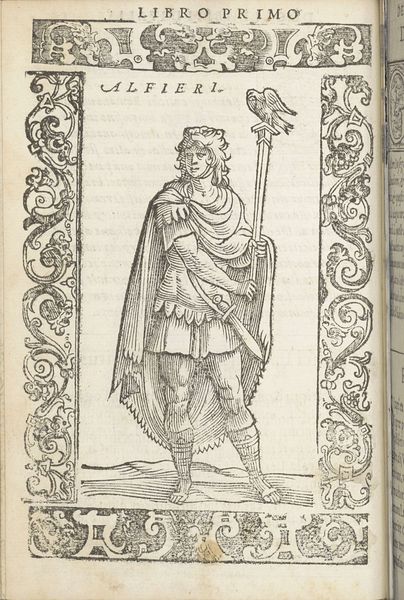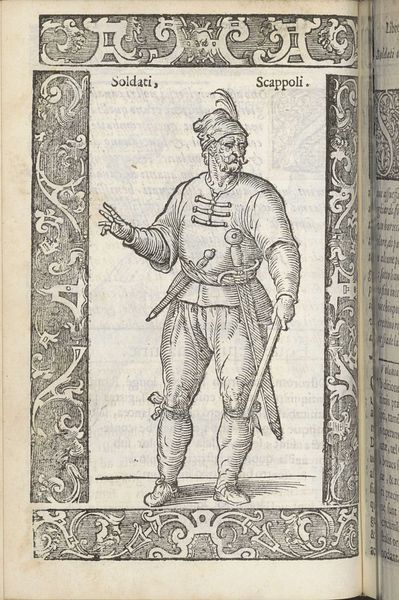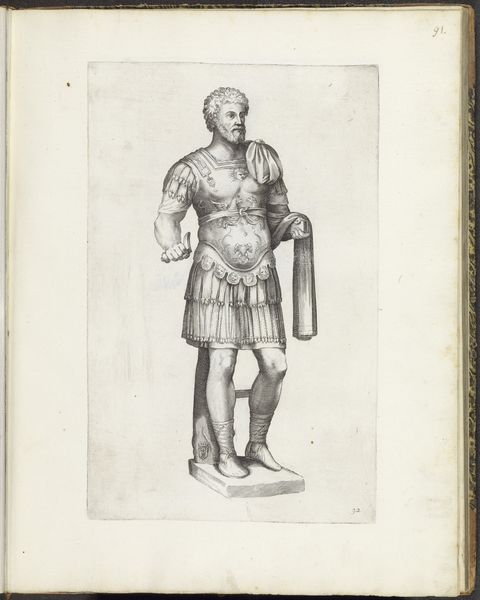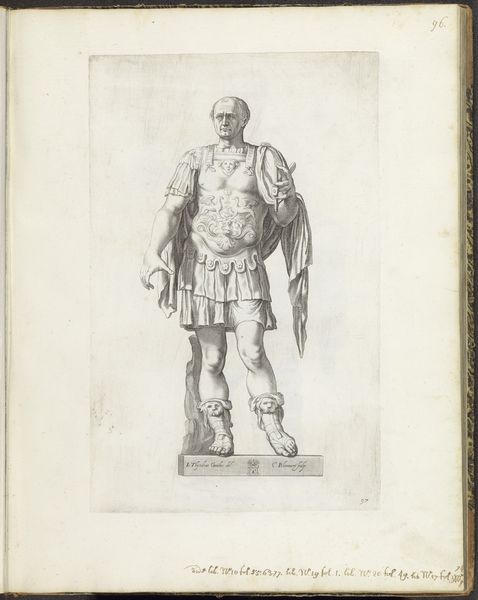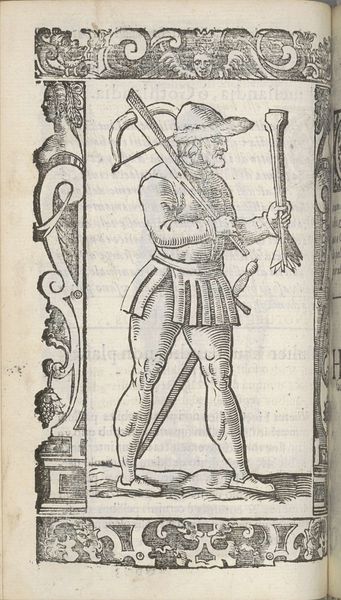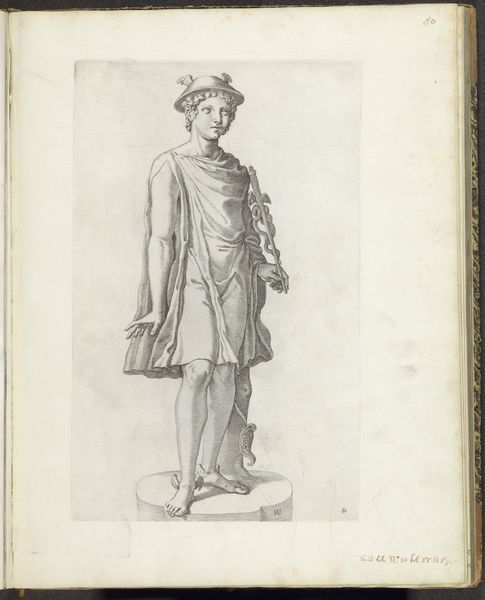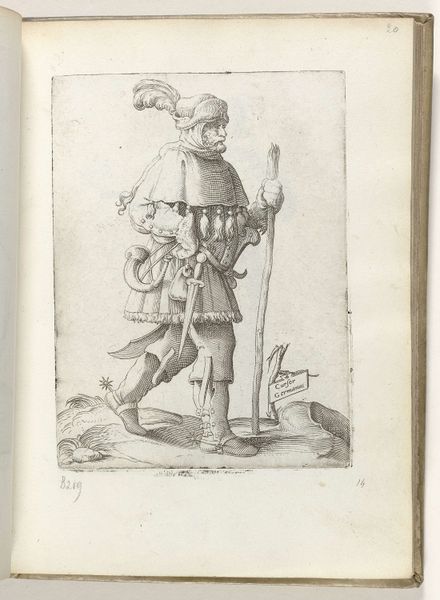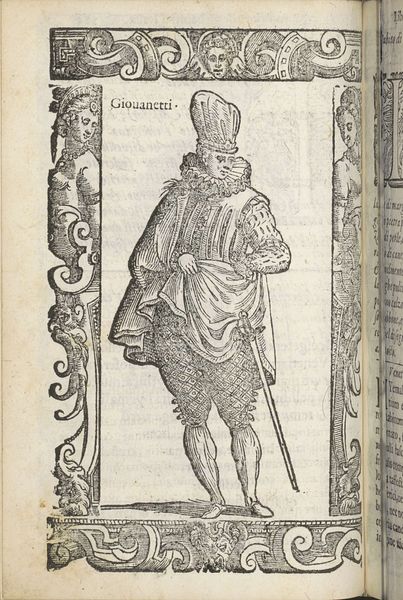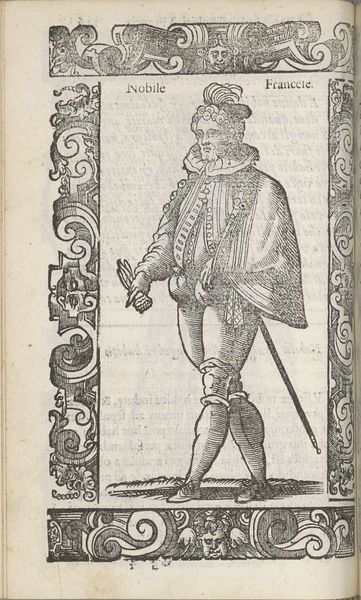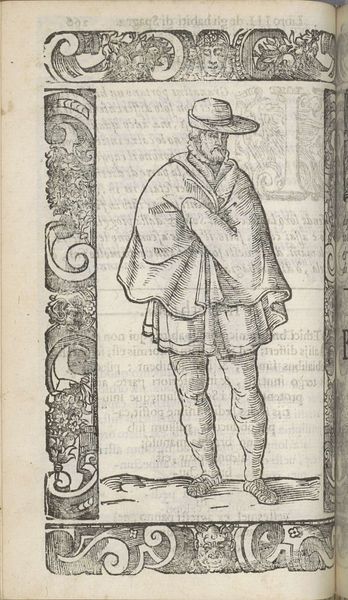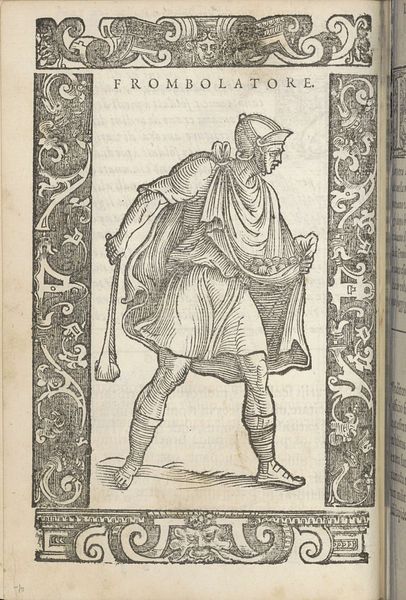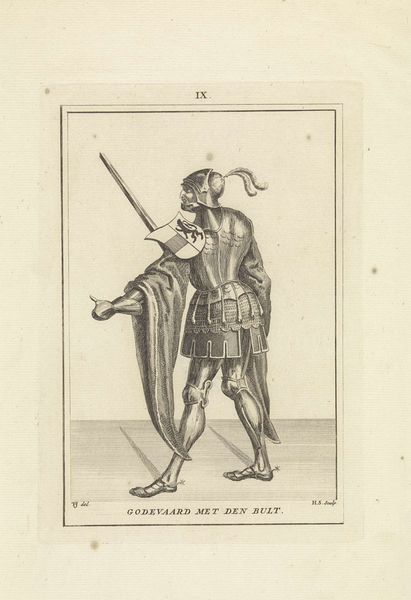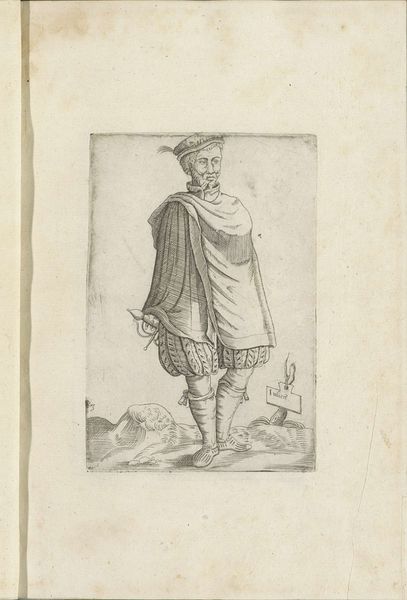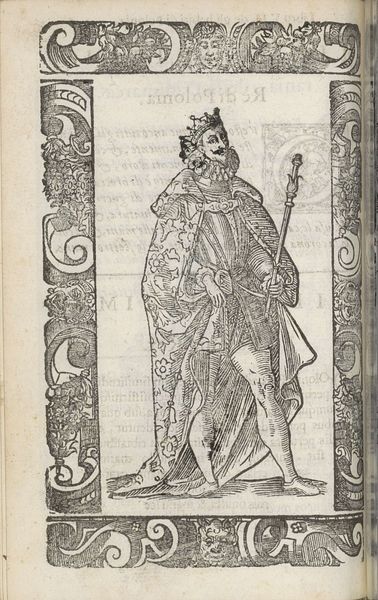
drawing, ink, engraving
#
portrait
#
drawing
#
baroque
#
pen sketch
#
pencil sketch
#
figuration
#
ink
#
history-painting
#
academic-art
#
engraving
Dimensions: height 231 mm, width 138 mm
Copyright: Rijks Museum: Open Domain
Curator: Here we have a 17th-century engraving titled "Sculptuur van Pyrrhus van Epirus." The artwork uses ink on what appears to be laid paper. Editor: My first impression is one of stark authority, but it feels curiously detached, almost lifeless, despite the robust figure. Is it the limited tonal range perhaps? Curator: The composition, meticulously rendered in ink, leans heavily on the figure itself, filling the frame and demonstrating precise penmanship through consistent hatching and cross-hatching. These early processes were costly endeavors that required skilled labor. This influenced what types of art were commissioned, creating social hierarchies around artwork production. Editor: Indeed, notice how the rigid lines articulate the details of Pyrrhus's armor, creating a visual texture that speaks to the meticulous craft. The contrast is subtle, yet the overall design effectively conveys a sense of classical statuary. What do you make of the artist's decision to render it as a drawing, as opposed to working directly with sculpture? Curator: Producing this image, even as a reproduction, was a laborious and meticulous task, but also transportable. Engravings circulated information, influencing broader culture by depicting the taste for antique statuary among elites. It raises questions about art consumption in that period: how these images were bartered, bought, or sold. Editor: Certainly, the piece conveys the stoicism associated with the period. Yet, I keep coming back to the absence of dynamism in this portrayal; this Pyrrhus, despite his stature, is static, evoking a contemplative, albeit cold, majesty. Curator: The formal stillness certainly reflects period artistic conventions; yet viewed through the lens of labor and material reality, the statue comes across almost as an aristocratic affectation or performance. The print allowed its owners to stage their learned tastes. Editor: A valuable reminder to consider the societal currents shaping artistic expression, especially in times so different from our own. Curator: A productive dialogue indeed. Thanks for bringing a formalist’s sensitivity to our material investigation.
Comments
No comments
Be the first to comment and join the conversation on the ultimate creative platform.
